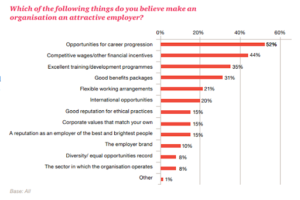A modest or low view of one’s own importance is also described as modesty, meekness and unassertiveness. This sounds like the things long therapy sessions are made of. Then why has humility become a trait attributable to the best organizational leaders? How To Be Humble at Work | Indeed.com For the simple fact that humility also means that you’re free from egotism and arrogance, that you look to others for good ideas, that you understand how your actions can affect those around you and that they may have a better way of doing things than you do. Contrast that with the leader who always thinks her ideas are the best, is not interested in what others have to say, and lacks the curiosity to explore better ways of doing things.
One characteristic of humble people is that they are open to and ask for the opinions and ideas of others. When you do this, you can learn more and discover new perspectives, and you may find that the workplace becomes a more innovative space. 10 Ways to Be More Innovative and Creative at Work | The Muse Innovation can leapfrog you in front of your competition and focus the team on a common goal.
Workplace humility is also likely to contribute to increased productivity as employees want to do well, collaborate with each other more and desire to produce high-quality work, whether it’s focused on a product or service. Humble people are also more likely to seek resources and give others the help they need to complete their tasks without thinking about the credit they should receive.
A humble work environment contributes to an employee’s job satisfaction. Leaders who practice humility by asking employees for their opinions, accepting ideas for how to better serve customers and acknowledging team members who have made a difference can make an employee feel empowered and validated. In turn, when employees have these positive feelings about their leadership and the company where they work, they tend to be more satisfied with their role, stay longer and have positive things to say about the organization they represent.
An organization may experience lower employee turnover when humility is a part of the company culture. Increased employee loyalty comes from having members of your team who appreciate the chance to be heard, feel like they are an important part of the organization and know that their work and ideas matter to the company’s success. Employees who are happy at work often choose to stay employed at the organization for longer, and may even refer other high-quality candidates in their network to the company’s open positions.
Humility often leads to collaboration because employees and managers alike realize the strengths of those they work with. You can better appreciate the experiences, education and skill set your coworkers have that balance your own, which can help grow your professional relationships into ones that improve output for the business and make the work environment more pleasant.
The goal is confident humility. Confident Humility: A Way to Lead so Everyone Wins | by Alana 🌴 | Personal Growth | Medium Not the type of humility that has you giving away credit constantly for the work you do, but the kind of humility that has you saying “ thank you. It was a lot of hard work, but the team had some great ideas which got the project over the line” Constantly downplaying the role that you have and what you have accomplished, is a recipe for someone picking you first in the lay line. Confident humility Confident Humility: Paradox of Successful Leadership – TechTello allows you to be open to others thoughts and ideas, work collaboratively and still feel a great deal of pride for the work you have accomplished.
